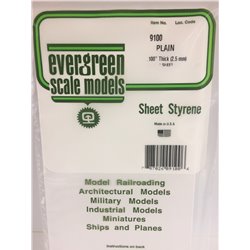Kato track is a popular choice in the world of model railways, known for its quality, ease of use and versatility. If...
No products
Product successfully added to your shopping cart
There are 0 items in your cart. There is 1 item in your cart.
Search Tips
Christmas and New Year
We are dispatching orders every weekday apart from Christmas Day, Boxing Day and New Year's Day.
If you order is time critical, select next day delivery at checkout.
The shop in Sandown is closed from 25th December, reopening on 30th December.
What is polystyrene?
Polystyrene is a versatile plastic material that is widely used for crafting highly detailed miniatures and models. This synthetic polymer, derived from styrene, is favoured by hobbyists and professional modellers alike for its ease of use, affordability, and adaptability. It is typically available in sheets or moulded parts, allowing for precision work in recreating vehicles, buildings, figurines, and other objects on a smaller scale. Its popularity stems from its consistent quality and compatibility with various modelling techniques.
Polystyrene's workability is one of its key strengths. It can be easily cut, sanded and shaped into intricate forms, making it ideal for creating detailed parts of model kits. Modellers often use fine-tooth saws, knives, or even laser cutters to achieve precise shapes. When it comes to assembling these pieces, polystyrene responds well to common adhesives such as poly cement or superglue, ensuring strong bonds between parts. In addition to this, it can be drilled or modified after assembly, providing flexibility for adjustments or customisation.
Another reason for its widespread use is its smooth surface and ability to hold paint well. Scale modellers can achieve highly realistic finishes, as polystyrene takes to a range of paints, including acrylic and enamel. A primer is often applied first to ensure paint adheres evenly and to enhance the durability of the finish. This quality makes it particularly popular for detailed models of vehicles such as aircraft, trains, and military tanks, where fine paintwork is essential for accuracy and realism.
Polystyrene is also lightweight yet sturdy, making it an excellent choice for models that need to be durable without being too heavy, especially for larger projects. Its durability ensures that it holds up well over time, even when handled frequently or displayed. Furthermore, the material’s resistance to warping or shrinking helps maintain the model's integrity, providing confidence that intricate builds will stay true to their intended form.
While polystyrene is excellent for many types of modelling, it does have some limitations. It is not very resistant to heat, so care must be taken when working with hot tools or placing completed models in areas with high temperatures. Additionally, some modellers find that it lacks the flexibility of other materials such as resin or metal, which may be more appropriate for certain applications, especially where thin, intricate parts are required.
Overall, polystyrene remains a staple in the world of scale modelling due to its versatility, ease of use, and cost-effectiveness. Whether building from a kit or scratch-building custom pieces, modellers in the UK and beyond continue to rely on polystyrene for creating realistic, detailed models across various subjects, from historic ships to futuristic sci-fi landscapes.
Click here to receive the tips weekly in your mailbox. You can unsubscribe at any time.










